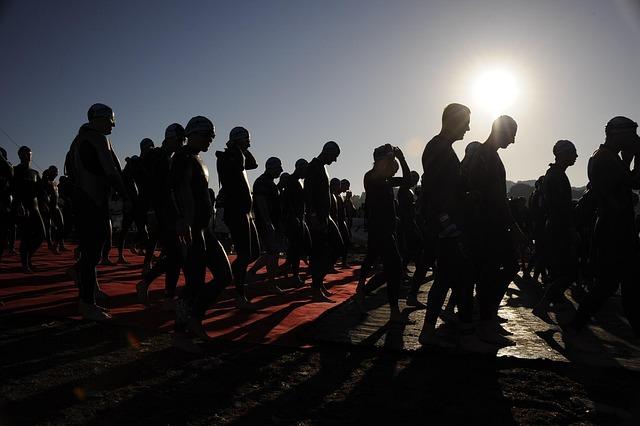In the world of race walking, a subtle yet curious detail has caught the eyes of spectators and commentators alike: some athletes compete with their belly buttons visibly covered. This seemingly small choice has sparked questions and discussions across the athletics community. According to a recent report by Diario AS, the practice is more than a mere fashion statement-it reflects a combination of practical, physiological, and regulatory considerations unique to this demanding sport. This article delves into the reasons behind why certain race walkers opt to conceal their navels during competition, shedding light on an intriguing aspect of race walking culture often overlooked by casual fans.
Reasons Behind Athletes Covering Their Belly Button in Race Walking Explained
In the world of race walking, a seemingly small detail such as covering the belly button has sparked curiosity among fans and commentators alike. The primary reason behind this practice is linked to reducing friction and irritation caused by the tight-fitting uniforms athletes wear. Since race walking demands smooth, repetitive hip and torso movements, the constant rubbing of the fabric against the navel area can lead to chafing, discomfort, and even minor skin abrasions. To counter this, many athletes apply specialized tape or wear adhesive coverings, creating a protective barrier that preserves skin integrity throughout the grueling race.
Beyond comfort, some athletes believe that covering the belly button offers subtle functional advantages. These include:
- Enhanced posture control: Applying kinesiology tape around the abdominal region may promote better core stability.
- Improved airflow: The tape can help adjust the uniform’s fit, slightly increasing breathability at the midsection.
- Psychological edge: The ritual of taping can boost confidence, signaling readiness before competition.
This combination of practical benefits and athlete preference underscores why the practice, although not universally adopted, is becoming a common sight in elite race walking events.
| Benefit | Explanation |
|---|---|
| Chafing Prevention | Protective barrier reduces skin irritation. |
| Core Stability | Tape supports abdominal muscles. |
| Uniform Fit | Improves fabric positioning and airflow. |
| Psychological Boost | Pre-competition ritual enhances focus. |
How Belly Button Protection Enhances Performance and Prevents Injuries
In race walking, where every micro-movement impacts endurance and speed, athletes often turn to unconventional methods to maintain peak performance. Covering the belly button might seem unusual, but it serves a critical role in protecting a sensitive area from repetitive friction caused by tight or ill-fitting gear. This friction can lead to irritation, chafing, and even small abrasions that compromise an athlete’s comfort and focus during competition. By shielding the navel with specialized tape or lightweight patches, athletes effectively minimize skin breakdown, allowing them to maintain fluid, uninhibited motion.
Beyond comfort, belly button protection offers tangible benefits:
- Reduction of skin irritation and infection risk
- Improved aerodynamics by smoothing the racewalking suit’s surface
- Enhanced mental focus by eliminating distracting discomfort
- Prevention of minor injuries that could escalate over long distances
| Benefit | Effect on Performance |
|---|---|
| Friction Reduction | Maintains skin integrity and prevents pain |
| Injury Prevention | Enables uninterrupted training and competition |
| Comfort Enhancement | Supports sustained focus and optimum pace |
Expert Tips on Proper Gear and Techniques for Race Walkers
Race walkers often face unique physical challenges that demand specific gear choices to optimize performance and reduce injury risk. One less-discussed but crucial tip involves the use of compression garments, particularly around the midsection. Many elite race walkers choose to cover their belly button area with specialized tapes or compression bands to support abdominal muscles and prevent chafing caused by repetitive swinging motions during the race. This strategic use of gear not only improves comfort but also enhances body alignment, allowing athletes to maintain the strict posture race walking requires without extra strain.
In addition to apparel, race walking technique relies heavily on maintaining consistent contact with the ground and maximizing stride efficiency through hip rotation and leg extension. Experts emphasize the following essentials for technique refinement:
- Controlled arm movement: Arms should swing naturally but remain close to the body to increase momentum.
- Foot placement awareness: Landing with the heel first and rolling to the toe ensures compliance with race walking rules and optimizes pace.
- Core engagement: Tightening abdominal muscles stabilizes the torso and reduces wasted energy.
| Gear | Purpose | Benefit |
|---|---|---|
| Compression Bands | Midsection support | Reduces muscle fatigue & chafing |
| Lightweight Shoes | Minimize impact | Improves stride control |
| Moisture-wicking Apparel | Temperature regulation | Keeps skin dry & comfortable |
In Summary
In conclusion, the practice of some race walkers covering their belly buttons is more than just a quirk; it serves practical purposes related to comfort, injury prevention, and even aerodynamic advantage. As detailed in Diario AS, understanding these small but significant details sheds light on the nuanced demands of race walking, an often overlooked but highly technical discipline. For athletes pushing their limits, every detail counts-including what goes on beneath their race gear.

